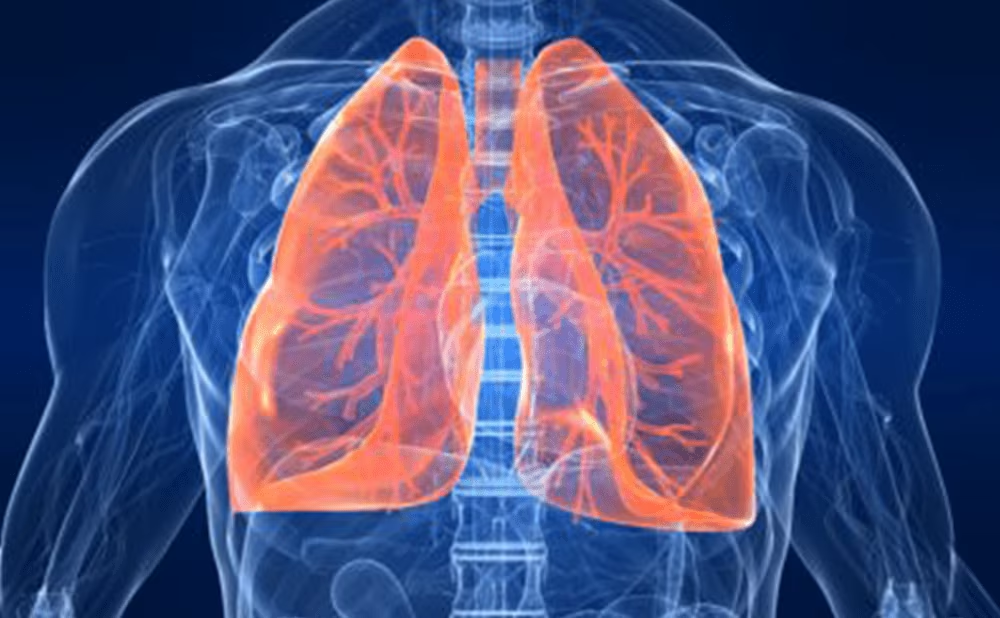Lung cancer accounts for the highest cancer-related mortality and is the second most common cause of malignancy worldwide.1 Diagnosis at an early stage (ES) has a direct effect on management and survival rates. Overall, the 5-year survival rate from 2013 to 2019 in the US was 62.8% when the cancer was detected at stage I or II compared with the significantly lower rates of 34.8% and 8.2% when detected at stage III and metastatic disease, respectively.2 The primary histological distinction in lung cancer is non-small cell lung cancer (NSCLC) and small cell lung cancer (SCLC), with the former accounting for 80–85% of cases.3 Surgical resection is the primary standard treatment for stage I and II NSCLC and, along with a growing body of evidence supporting neoadjuvant immunotherapy, is confirmed as an important component in the multimodal management of selected stage IIIA NSCLC.4 With advancements in screening, diagnostic techniques and treatment options (ranging from radiation therapy to targeted immunotherapies), there have been notable improvements in survival rates for patients with lung cancer. Within a span of a decade (2010–2020), death rates in the US decreased from 47.4% to 31.8% overall for all types of lung cancer.2 This article aims to highlight the changing role of surgery and bronchoscopy in the treatment of ES NSCLC.
Treatment strategies for early-stage lung cancer
Currently, surgical resection remains the gold standard for treatment of ES NSCLC. The main alternative treatment modality in selected cases without bronchus or lobar involvement is stereotactic body radiotherapy (SBRT), in which ablative doses of radiation are delivered to the primary tumour. Although SBRT is less invasive than surgical resection, operative management in conjunction with lymph node (LN) excision has been shown to improve survival rates for various subsets of NSCLC.3,5,6 One large cohort study based on the National Cancer Database from 2004–2015 highlighted a 5-year overall survival for patients with ES NSCLC who underwent surgical resection of 48.1% to 64.6%, depending on the type of resection, compared with 30.4% in those who received SBRT.3 Despite these data, SBRT remains an important option for patients who are not suitable for surgery. There are limitations of the interpretation of studies in favour of surgical management, as those who opted for SBRT are often poor surgical candidates whose co-morbidities may have contributed towards inferior survival rates. Some limited retrospective studies with the propensity-score matching of data have suggested the equivalence of SBRT and surgical management.7,8 Randomized prospective data comparing the two treatment strategies have been limited by inadequate enrollment size. However, one post hoc analysis of two small randomized trials suggested the noninferiority of SBRT.9
A major part of definitive surgical therapy is the performance of adequate regional LN sampling, as surgical resection performed with LN dissection is associated with superior long-term survival coupled with minimal additional procedure-associated morbidity.3,6 In addition to achieving histological diagnosis and obtaining adequate tissue for next-generation sequencing, if not previously ascertained, surgical LN dissection assists with appropriate staging to guide postoperative management, as patients with any LN disease warrant adjuvant chemotherapy and, frequently, concomitant immunotherapy.
There has been growing recognition of the role of immunotherapy as a neoadjuvant or perioperative component of surgical management in NSCLC amenable to resection. The CheckMate 816 trial significantly improved survival with neoadjuvant nivolumab plus chemotherapy in resectable NSCLC.4 Subsequent similar trials have validated this finding with various other neoadjuvant immunotherapies, with the general hypothesis that it facilitates T-cell priming that can downstage tumours prior to surgical resection, followed by on-going activity against micrometastatic disease post-resection.10–13
The evolution of surgical management
Conventional open lobectomy has a favourable 5-year disease-free survival rate of 68%.14,15 However, it is associated with a significant postoperative complication rate of up to 37%, including increased frequency of respiratory failure, decreased baseline pulmonary function, and a mortality rate of up to 3%.6,14,15 While video-assisted thoracoscopic surgery (VATS) was first used as early as 1910, it became more widespread in the 1980s, and its use was facilitated by improved video technology and single lung ventilation with double-lumen endotracheal tubes.16 This treatment has since become the standard surgical approach.6,16,17 Early retrospective studies noted noninferiority of survival of patients with ES NSCLC who underwent VATS compared with open thoracotomy, and subsequent meta-analyses confirmed the superior 5-year survival rates in these patients.18–21 Importantly, no difference in the extent and adequacy of mediastinal LN dissection obtained and lower rates of complications and duration of chest tube placement has been attested with VATS.22–24 More recent randomized control trials additionally suggested improved recovery of physical function postoperatively, as well as the overall lower cost of VATS.17,25 Furthermore, patients with high-risk co-morbidities, particularly those with poor baseline pulmonary function, have lower postoperative complication rates.26
With the advent of minimally invasive surgery, robotic video-assisted thoracic surgery (RVATS) became an additional strategy for lung resections in the 2000s. As well as being less invasive than VATS, as it can produce smaller incisions without needing to spread the ribs, RVATS also allows for more precise dissection compared with VATS due to its binocular visualization system and capability to use carbon dioxide insufflation to increase the working area.27 Initial retrospective comparison of patients who underwent RVATS versus VATS or thoracotomy portray comparable types and rates of complications and favourable long-term stage-specific survival.28–30 There is still a relative paucity of data reviewing long-term outcomes, particularly as conflicting reports depict a potentially lower number of LNs examined and lower rates of nodal upstaging. The first prospective randomized control trial described comparable perioperative outcomes between RVATs and VATS.31 Notably, this study used uniportal VATS, yet another extension of techniques in minimally invasive surgery using a single incision, which allows for a sagittal alignment of instruments inside the chest cavity, rather than the traditional multiport method. Uniportal VATS has received some critique, such as that it may be prohibitory for segmentectomies, which require the careful delineation of margins to prevent locoregional recurrence.32 Nonetheless, this technique represents an improvement that may be particularly relevant for application in resource settings where RVATS is not feasible.33
In addition to technical advancements, there have also been progressive efforts towards sub-lobar resections or segmentectomies, with the aim of preserving maximal lung parenchyma. Lobectomy has previously been established as the standard of care for the resection of ES NSCLC due to the findings of a randomized prospective trial by the Lung Cancer Study Group suggesting a threefold increase in the frequency of recurrence and a 50% increase in cancer-specific mortality rate with sub-lobar resections.34 However, with the increased detection of smaller peripheral pulmonary nodules (PPN) since 1995 when the Lung Cancer Study Group study was conducted, there has been on-going debate over revisiting this guideline. To this end, two recent large randomized noninferiority trials proposed sub-lobar resections as the management of choice for small-sized peripheral ES NSCLC. The first was a multicentre study conducted across Japan, which randomized patients to receive either segmentectomy or lobectomy. This study showed segmentectomy to be superior for 5-year overall survival.35 The second was an international multicentre trial published in 2023, which similarly suggested the noninferiority of sub-lobar resection versus lobectomy in both disease-free and overall survival in patients with clinical stage IA NSCLC with a tumour size of 2 cm or smaller.36 Even though locoregional recurrence rates were slightly higher after sub-lobar resection at 13.4% compared with 10.0% with lobectomy, the authors suggest that the difference was not clinically meaningful. There were otherwise no statistically significant differences in regional or distant recurrence rates. Sub-lobar resections are now recognized as the acceptable standard of care for patients with stage IA NSCLC by the American Society of Clinical Oncology.37
The role of bronchoscopy
One of the important roles of bronchoscopy has become not only the evaluation of nodules but also the concurrent evaluation of mediastinal and hilar lymphadenopathy with endobronchial ultrasound-guided transbronchial needle aspiration (EBUS-TBNA). EBUS-TBNA has largely replaced mediastinoscopy for the initial evaluation, as it has higher nodal staging accuracy and safety.38,39 Its high negative predictive value for radiographically N0 disease, sensitivity for detection of occult metastasis allowing for nodal upstaging, and low complication rate make it an ideal staging technique.38,39 A recent long-term analysis confirmed a good correlation for 5-year survival analyses for nodal staging performed by EBUS-TBNA, and notably, patients with false-negative N0 staging via EBUS-TBNA had a comparable survival rate to those with N1 disease.40
While the diagnostic yield of each method remains highly variable with a lack of comparative studies, image-guided bronchoscopy techniques with navigational systems and biopsies localized by radial probe EBUS are used to evaluate PPN for earlier pathologic diagnosis that were previously not able to be endoscopically reached via conventional bronchoscopy.41 Most recently, robotic-assisted bronchoscopy (RB) has emerged as a platform for improving lesion localization and, possibly, diagnostic yield.42 However, more randomized trials are needed to validate the performance of RB.42 Transbronchial cryobiopsy is another means of minimally invasive tissue sampling that allows for larger sample size and superior preservation of tissue for both histopathologic and molecular analysis in comparison with traditional forceps biopsies.43,44 The availability of a smaller 1.1 mm probe has shown promising safety data for the widespread application to even novice bronchoscopists.45 These advances in the technology of bronchoscopy allow for less frequent surgical resection of benign disease and optimization of patient selection.46
In addition to its diagnostic role in pulmonary nodules, bronchoscopy can also be used in therapeutics. Bronchoscopic-guided dye marking for PPN has been shown to be helpful for directing surgical resection, given these small lesions that otherwise often have no visual pleural markers, particularly in the absence of tactile stimulus with the use of VATS and RVATS.47,48 While this technique is still in its infancy, it has thus far been suggested to be feasible, effective and safe. Indeed, a recent international consensus statement supported the use of fluorescence imaging for marking boundaries for sublobar resections and intraoperative lung nodule localization with class IIa recommendations.49 Future studies will evaluate the possibility of bronchoscopic ablation for ES lung cancer; however, these do not appear to be ready for widespread clinical adoption and are still in the early clinical trial phases.50
Conclusions
The evolution of surgical management and the practice of bronchoscopy are complementary in lung cancer management. The trend towards a less invasive surgical approach has implications for not only patient-centred outcomes, but it may also broaden the eligibility of patients with ES NSCLC who may have previously been excluded from consideration for resection. Earlier histopathologic diagnosis and accurate staging with improved bronchoscopic PPN localization and sampling will also expand the patient population considered for resection and, perhaps in the future, even change the current approach to the treatment of SCLC with earlier, more localized detection.







